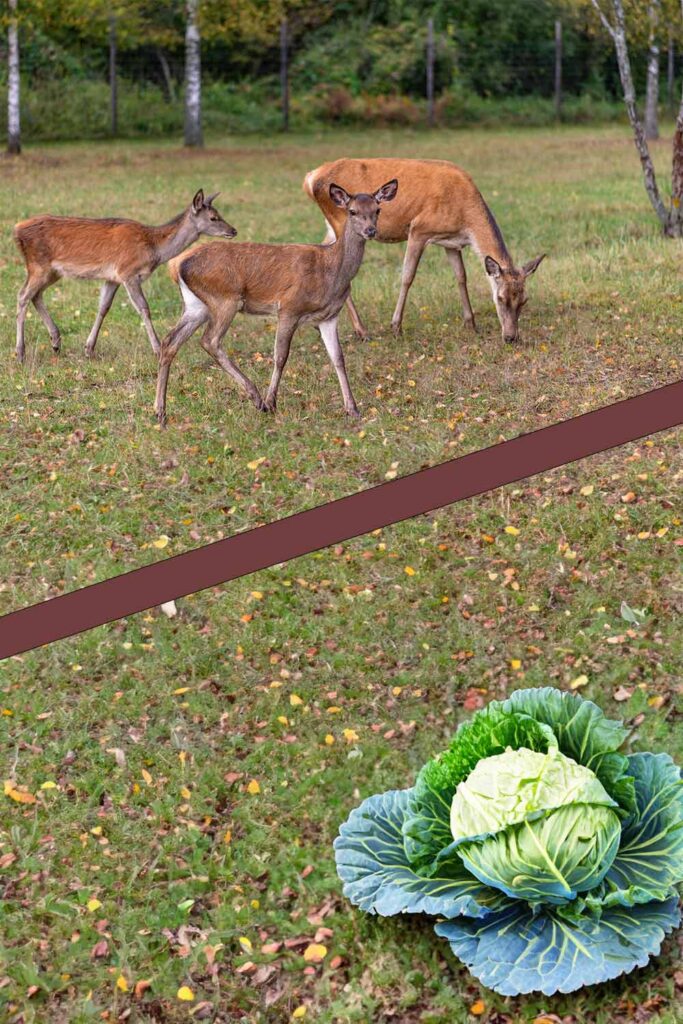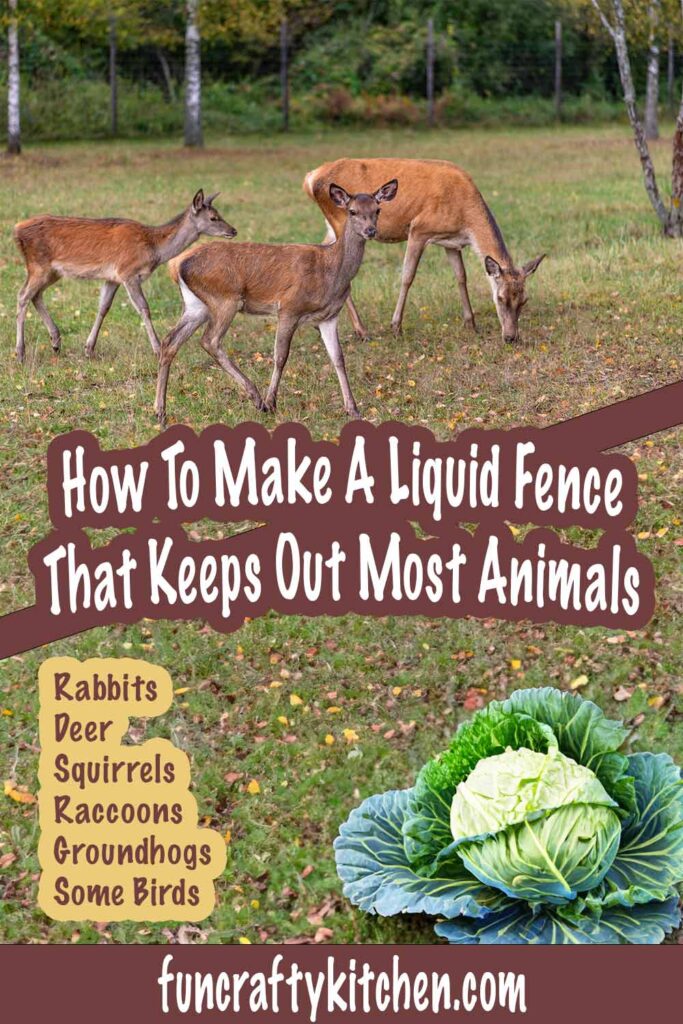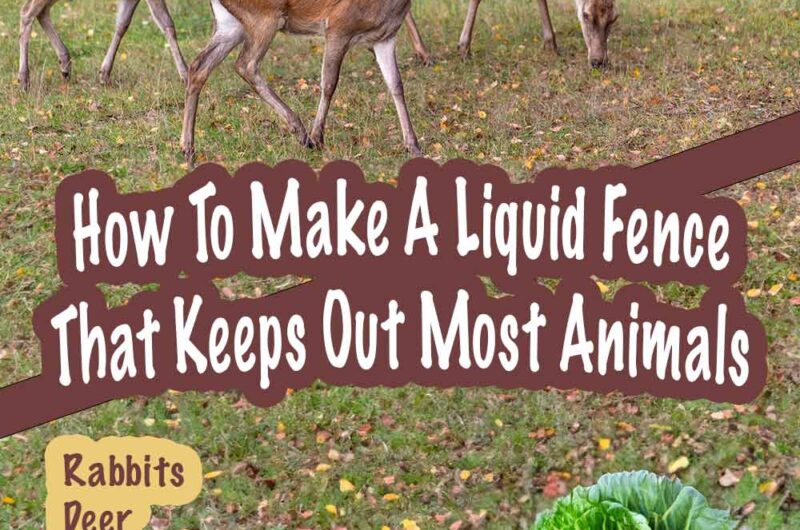How To Make A Liquid Fence That Keeps Out Most Animals

A lush and thriving garden is a testament to hard work and dedication. But when uninvited guests, like pesky animals, start damaging your plants, it can be a source of frustration.
One effective solution to protect your garden is by making a liquid fence that acts as a barrier against these intruders. In this comprehensive guide, we’ll show you how to create a liquid fence to keep out most animals, providing both practical tips and the science behind it.
Understanding Animal Intrusion: The Why and How

Before we dive into the recipe and application of a liquid fence, it’s crucial to understand why animals invade your garden. Different creatures seek different things, such as food, shelter, or territory.
Common garden invaders include deer, rabbits, squirrels, and raccoons, and they can wreak havoc on your carefully cultivated plants. To keep these animals at bay, we need to think like them and utilize their sensory perception to our advantage.
The Science Behind the Liquid Fence
Several animals, particularly mammals, have a strong sense of smell. They rely on scent to identify food, danger, and territory. This sensitivity to odor is our key to creating an effective liquid fence.
Predator Urine:

Many animals have predators that they instinctively fear. Products like “predator urine” are available commercially. For example, coyote urine can deter rabbits and deer. These liquid repellents work because the scent signals the presence of a potential threat, scaring off potential invaders.
Capsaicin:

Capsaicin, found in hot peppers, can be a powerful deterrent. It irritates the senses of animals and acts as a natural defense mechanism against herbivores. Capsaicin can be used as a repellent when mixed with water and applied to plants.
What animals can the liquid fence repel?

This DIY liquid fence can effectively repel a variety of animals, particularly smaller mammals and some birds. Some of the animals it can deter include:
- Rabbits: The spicy scent of cayenne pepper is a strong deterrent for rabbits.
- Deer: Deer have a keen sense of smell, and the strong odor of cayenne pepper can keep them away.
- Squirrels: Squirrels are sensitive to strong scents and can be deterred by the smell of cayenne pepper.
- Raccoons: Raccoons are known for their curiosity, and the scent of cayenne can discourage them from approaching your garden.
- Groundhogs: Groundhogs, also known as woodchucks, can be repelled by the spicy scent.
- Birds: Some birds, like sparrows and starlings, may be discouraged from feeding on your plants due to the cayenne pepper’s pungency.

DIY Liquid Fence Recipe: Printable Recipe at the end.
Ingredients:
- 1 tablespoon of cayenne pepper (containing capsaicin)
- 1 tablespoon of dish soap
- 1 gallon of water
- Empty spray bottle
Instructions:
- Mix the cayenne pepper and dish soap into the gallon of water.
- Stir the mixture well to ensure the ingredients are evenly distributed.
- Transfer the mixture into the empty spray bottle.
Application:
- Before applying the liquid fence, make sure your garden is clean and free of any animal droppings, as this could attract them.
- Spray the liquid fence on and around your plants, focusing on the perimeter of your garden.
- Reapply the mixture after rainfall or every two weeks to maintain its effectiveness.
Additional Tips:
- You can use additional scents like garlic or onion to reinforce the repellent effect, as animals dislike these smells.
- Consider using motion-activated sprinklers as an additional layer of defense.
DIY Liquid Fence
Instructions
- Mix the cayenne pepper and dish soap into the gallon of water.
- Stir the mixture well to ensure the ingredients are evenly distributed.
- Transfer the mixture into the empty spray bottle.
Notes
- You can use additional scents like garlic or onion to reinforce the repellent effect, as animals dislike these smells.
- Consider using motion-activated sprinklers as an additional layer of defense.
By understanding the science behind animal behavior and employing this DIY liquid fence recipe, you can protect your garden effectively.
This approach is not only eco-friendly but also cost-effective, making it a great choice for any gardener looking to keep their garden thriving and free from unwanted animal intruders.
Sources:
- University of Illinois Extension. (2020). Animal-Resistant Plants.
- Cornell University Cooperative Extension. (2019). Deer Damage Management.
Thank you for taking the time to read our comprehensive guide on creating a DIY liquid fence to protect your garden from unwanted animal intruders. We hope you found the information helpful and insightful.
If you’ve learned something valuable from this article, we encourage you to share it with your friends and followers on your social media accounts. By sharing this knowledge, you’re not only helping others safeguard their gardens but also contributing to the community of passionate gardeners.
Your support is greatly appreciated, and together, we can make gardening a more enjoyable and successful endeavor for everyone. Happy gardening! 🌱🐾
More interesting articles from us:
Super EASY Fettuccine Alfredo Recipe
Orange Creamsicle Pie Recipe
How To Crochet Your Own Miniature Elephant
How To Revive Cutting Boards And Why You SHOULD
The Ultimate Stainless Steel Fingerprint Hack
BBQ Chicken Slider Sandwiches





